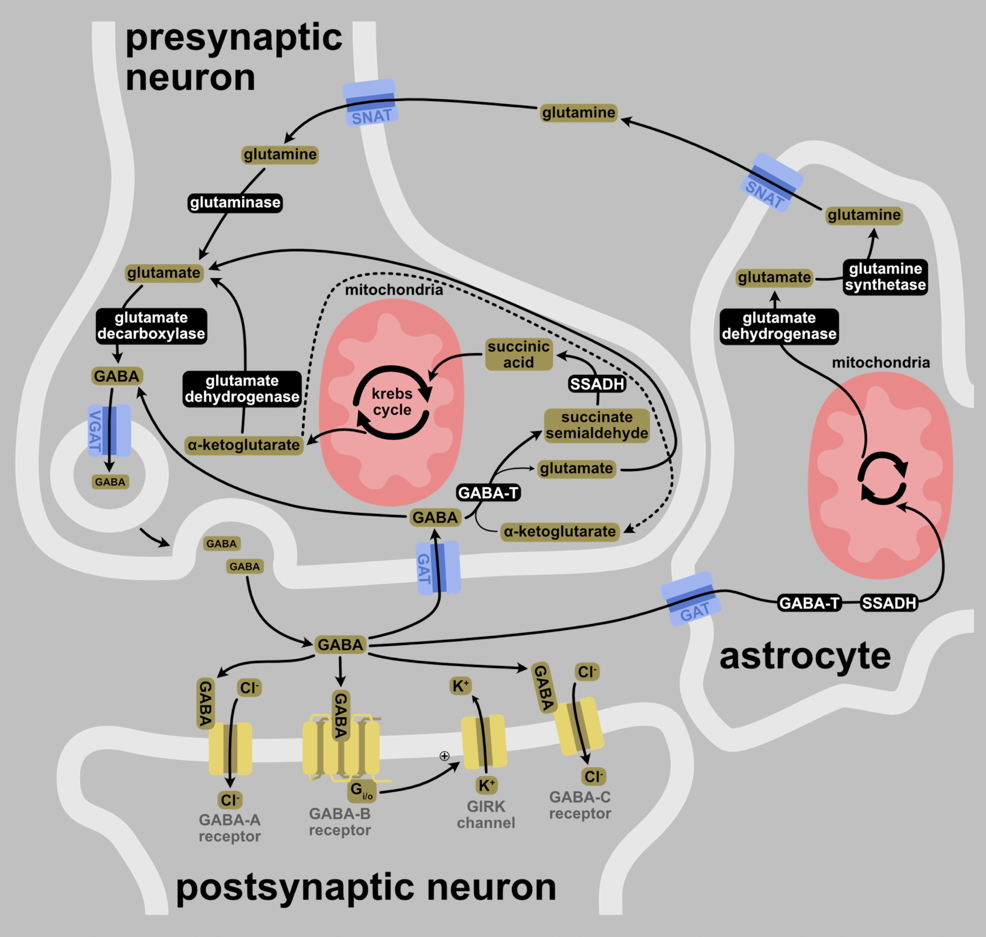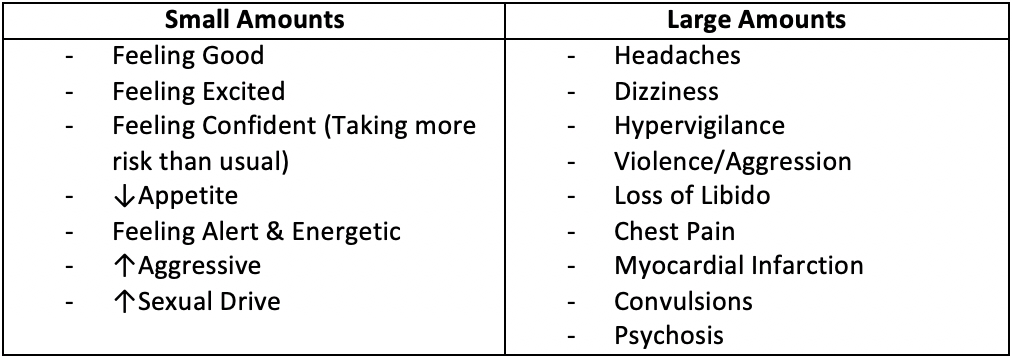Table of Contents
Overview – Illicit Drugs
Illicit drugs are psychoactive substances used non-medically for their mood-altering effects, and they pose serious health, social, and economic risks. Understanding the pharmacodynamics, clinical effects, and complications of illicit drugs is crucial for final-year medical students. These substances primarily act on neurotransmitter systems such as dopamine, serotonin, and gamma-aminobutyric acid (GABA), often hijacking the brain’s mesolimbic dopamine pathway, which reinforces reward and pleasure. This page provides a high-yield breakdown of major illicit drugs by substance class and mechanism.


Benzodiazepines
Pharmacodynamics
- GABA-A receptor modulators
- ↑ GABA-A channel affinity → ↑ Cl⁻ influx → hyperpolarisation → CNS inhibition
Clinical Effects
Immediate:
- Anxiolysis, sedation, muscle relaxation
- Respiratory depression (especially when combined with alcohol or opioids)
Chronic:
- Tolerance and dependence
- Withdrawal: tremor, anxiety, seizures (can be life-threatening)


Opioids (Heroin, Codeine, Fentanyl)
Pharmacodynamics
- μ and δ opioid receptor agonists
- Inhibit GABA release in nucleus accumbens → disinhibition of dopamine neurons → ↑ dopamine release
- Stimulates mesolimbic pathway
Note: Heroin is more lipophilic than morphine → faster BBB penetration → stronger euphoria
Clinical Effects
Immediate:
- Euphoria, analgesia, pinpoint pupils, sedation
- Nausea/vomiting, hypothermia, respiratory depression
Chronic:
- Collapsed veins, skin abscesses, infections (HIV, hepatitis), chronic constipation
- Fertility issues, malnutrition, overdose risk, significant social consequences


Cocaine
Pharmacodynamics
- Blocks reuptake of dopamine, serotonin, noradrenaline → ↑ synaptic levels
- Strongly stimulates mesolimbic pathway
Clinical Effects


Immediate:
- Tachycardia, hypertension, hyperthermia, mydriasis, euphoria, ↑ energy
- ↑ risk-taking behaviour, agitation, paranoia, hallucinations
Toxicity:
- Chest pain, MI, seizures, psychosis, sudden death
Chronic:
- Nasal septum perforation, insomnia, depression, needle-related infections


Amphetamines (Including Speed and Ice)
Pharmacodynamics
- Reverses dopamine reuptake transporter → dopamine released into synapse
- Inhibits vesicular packaging of dopamine → amplifies synaptic dopamine
- Stimulates mesolimbic dopamine pathway
Note:
- “Ice” = crystal methamphetamine, ~80% purity
- “Speed” = powdered, ~20–30% purity
Clinical Effects
Immediate:
- Euphoria, hypervigilance, insomnia, tachycardia, hypertension
- Paranoia, hallucinations, compulsive scratching, increased libido
Amphetamine Psychosis:
- Delusions, aggression, bizarre behaviour
Chronic:
- Malnutrition, “meth mouth,” depression, anxiety, cognitive impairment
- Hypertension-related complications
Ecstasy (MDMA)
Pharmacodynamics
- Inhibits vesicular monoamine transporter
- ↑ Serotonin, dopamine, noradrenaline in cytoplasm
- Reverses reuptake transporters → flood of monoamines in synapse
Clinical Effects
Immediate (lasting up to 6 hours):
- Euphoria, heightened empathy, jaw clenching, hyperthermia, dehydration
- Seizures, vomiting, hallucinations
Long-Term:
- Insomnia, bruxism (teeth grinding), mood disturbances, poor concentration
Overdose/Adverse Reaction:
- Hypertensive crisis, atrial fibrillation, hyperthermia → death


Chapter 40 – Mitochondrial Trails in the Neurotoxic Mechanisms of MDMA, https://doi.org/10.1016/B978-0-12-800212-4.00040-6
Pathophysiology – Mesolimbic Dopamine Pathway
Nearly all addictive drugs hijack the mesolimbic dopamine system, particularly involving the ventral tegmental area (VTA) and nucleus accumbens. This reward circuitry, which is meant to reinforce survival behaviours, is overstimulated by drugs, leading to reinforcement of drug-seeking and compulsive use. Chronic activation leads to structural and functional changes underpinning tolerance, dependence, and withdrawal.
Summary – Illicit Drugs
Illicit drugs such as opioids, amphetamines, ecstasy, cocaine, alcohol, and benzodiazepines each produce characteristic physiological and psychological effects, with addiction rooted in overactivation of the mesolimbic dopamine pathway. These substances carry high risks of harm, dependence, and withdrawal, making their understanding essential in clinical practice. For a broader context, see our Psychiatry & Mental Health Overview page.